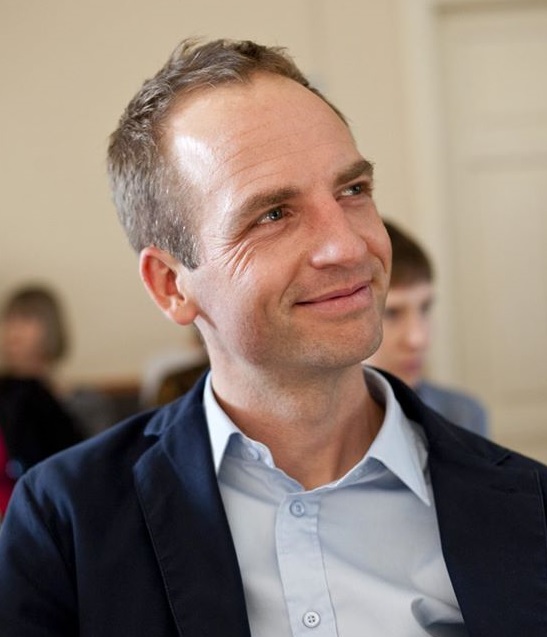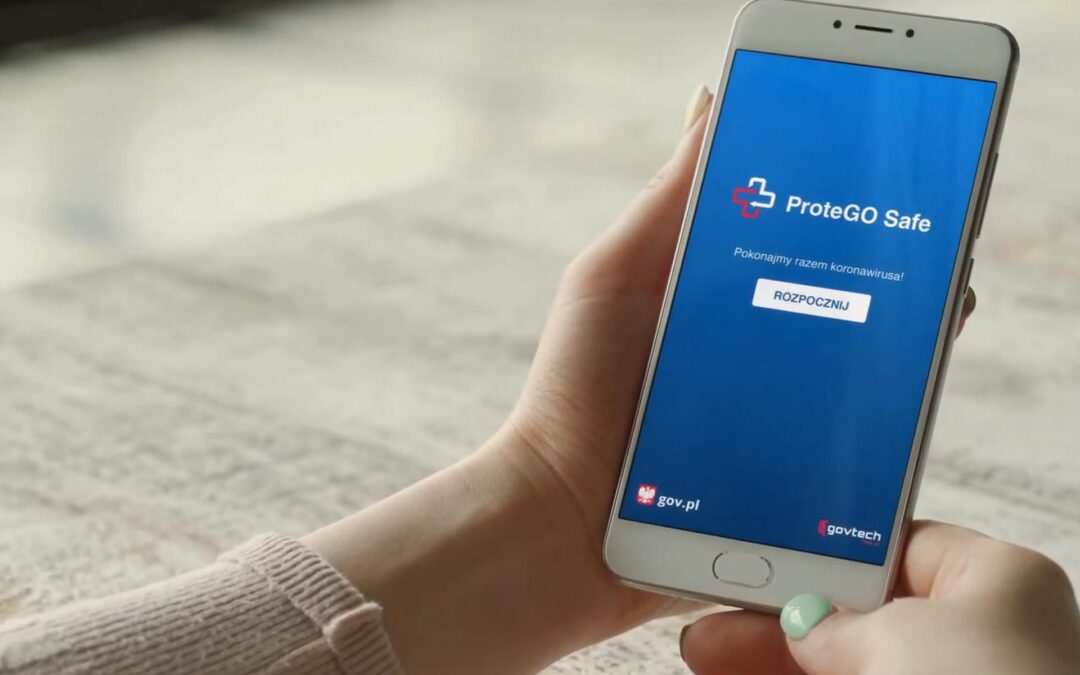Just 1.9% of the Polish population have downloaded the government’s COVID-19 contact tracing app since its launch in June. That is one of the lowest levels of take-up among European countries.
Such low adoption means that the app will not be effective, according to experts. The system, which cost around 2.5 million zloty (€0.6 million) to develop, has also been hit by concerns over privacy and functionality.
Low uptake
The latest data from Poland’s digitisation ministry show that, by 6 September, fewer than 725,000 people had downloaded the ProteGo app. As a proportion of the population, that is the second lower figure among 18 European countries compared by 300Gospodarka, a business news website.
W Polsce liczba osób, które ściągnęły aplikację ProteGO Safe, wciąż nie przekracza 2 proc. W Finlandii w tydzień aplikację ściągnęła jedna trzecia obywateli. #ProteGOSafe #koronawirus #KoronawirusWPolsce #koronawiruspolskahttps://t.co/WUPkusQXAG
— 300Gospodarka (@300gospodarka) September 10, 2020
Just Slovenia had a lower figure, although its app was only released in mid-August and the data come from two weeks later. The Czech Republic and France had marginally better percentages for their apps, followed by several countries recording between 6% and 11%.
The European leader is Iceland, whose government agency responsible for the app reports usage by 40% of the population, according to 300Gospodarka.
In second place in the European table is Ireland (33%). When its app launched in July, it was downloaded 1 million times within 24 hours, according to Reuters. Germany saw 6.5 million downloads – equivalent to 7.8% of the country’s population – with 24 hours, reports ZDNet. It now has almost 22% coverage.
Among countries not included in 300Gospodarka’s ranking, some, such as Bulgaria and Croatia, may have similarly low take-up to Poland, but no data were available, notes the website.
Meanwhile, some countries have not yet completed their tracing apps or have decided against producing one. England is due to launch its app later this month, following the abandonment in June of an earlier attempt.
Since the June release of our report on contact tracing apps, there have been new developments in the jurisdictions we evaluated, including Canada. We have added an addendum to reflect these with a renewed call for legislative clarity & enforcement. Read: https://t.co/FgCjfuKg1a pic.twitter.com/HBCrrFousj
— Cybersecure Policy Exchange (@cyberpolicyx) September 1, 2020
Experts have warned that low take-up rates will render apps ineffective. A recent research review at University College London found that tracking apps would only be effective at reducing the spread of coronavirus if they are adopted by more than three quarters of the population, reports the Financial Times.
Another oft-cited minimum adoption rate is 60%. However, researchers at the University of Oxford who produced the findings on which that claim is based say their work has been misunderstood.
Tracing apps “start to have a protective effect” at “at all levels of uptake”, said the research team in June, quoted by MIT Technology Review. They emphasise, though, that the higher the uptake rate, the better.
.@clalavelle asks Nicola Sturgeon what uptake aims is for "Protect Scotland" Covid proximity app. FM: "We've not set a target – we will not set a target". This study looked at research that found 56-95% uptake needed for such apps to be effective https://t.co/MmZ2z1itVz
— Chris Musson (@ChrisMusson) September 7, 2020
Poland’s app
Poland’s ProteGO Safe app comprises two modules. The first is an electronic journal for users to monitor the state of their health. The second uses Bluetooth technology to record data on proximity to other users with the app installed on their devices.
If a user contracts COVID-19, they should report the infection in the app using a special PIN, resulting in other users who have spent some time in the same places as them within the last 14 days being informed.
The first version of the Polish app was released on 20 April. The launch of its full, improved version including tracing technology followed on 9 June. As the government website promoting the app stresses, it is “important for as many people as possible to use it”.
Na wakacje zabierz ze sobą #ProteGOSafe. Aplikacja – w razie potrzeby – wyśle Ci powiadomienie o możliwym kontakcie z #koronawirus! Jest bezpieczna i bezpłatna.
👉 Pobierz, zainstaluj i korzystaj z ProteGO Safe.
Wszystko w Twoich rękach.https://t.co/L6iP98O3V1@MC_GOV_PL pic.twitter.com/qqa95SroGB— Główny Inspektorat Sanitarny (@GIS_gov) July 30, 2020
Privacy concerns
One reason for the low take-up may be lack of trust amid continuing concerns over privacy. When the app was launched, there were doubts over its compliance with the European Union’s General Data Protection Regulation (GDPR).
The development ministry caused controversy by suggesting certain privileges for users of the app, such as being allowed to skip queues in shops, meaning that personal data would have to be provided.
The Panoptykon Foundation, which monitors potential violation of civil liberties through surveillance, was among those who expressed initial concern.
However, Panoptykon now praises the government for responding to criticism, and notes that the current app appears to be “safe and in accordance with the rules of good design of such solutions”.
Registration for the app is now fully anonymous. However, this means that it is difficult to measure its effectiveness, according to Tomasz Zieliński, a programmer and blogger quoted by Gazeta Wyborcza.
He also notes that, in the two weeks up to 2 September, only 11 people in the whole of Poland had used the app to report that they have tested positive for coronavirus.
Polish contact-tracing app #ProteGOSafe allows the Ministry of Digital Affairs to learn who installed the app, how it's used and when (if) uninstalled. Based on IP
Address Monitoring. https://t.co/zoWYSSeU6Q— Gosia Fraser 🇬🇧🇵🇱🇪🇺 (@Apsalaar) June 7, 2020
“Probably useless”
Another problem is that Bluetooth does not always work. Even in laboratory conditions, turning a telephone 90 degrees can prevent it from detecting other devices, says Zieliński, adding that in the real world various obstacles make it even less effective.
ProteGO Safe currently has an average score of just 2.4 out of 5 in the Google App Store, with reviewers noting functionality problems and privacy concerns. Foreigners based in Poland have also complained of the lack of any language options other than Polish.
In response to the latter complaint, the digitisation ministry say that its priority was “to deliver a fully functional app as soon as possible”. It has announced that an English version will be available from next week.
ProteGO Safe cost more than 2.5 million zloty to develop and has monthly operating costs of 136,500 zloty, reports Business Insider. Adam Andruszkiewicz, a deputy digitisation minister, noted that a similar app in Germany cost almost 20 million euro to produce.
However, according to Piotr Konieczny, the founder of leading Polish computer security website Niebezpiecznik.pl, the cost of developing the Polish app was “surprisingly” expensive.
Moreover, “much of this money has simply been wasted due to lack of competence in areas relating to privacy”, says Konieczny, quoted by Wirtualne Media.
“Functions were created that were later modified or withdrawn after protests, and this generated costs. This could have been avoided if the development team had listened to community feedback from the outset.”
In Konieczny’s opinion, the app is “at present useless, and will most probably remain useless”. However, he says that this is due to technological constraints rather than the specificities of the Polish app.
When these limitations became clear, the app should have been abandoned and resources focused on “other, more effective methods of fighting coronavirus”, he argues.
In March, the Polish government launched a separate app for people required to undergo quarantine, who had to take selfies and respond to messages to prove their whereabouts, although users also reported problems with the technology.
Poland has experienced a relatively low rate of coronavirus infections by international standards, following a tough and early lockdown. However, new cases recently rose to their highest ever level after restrictions were loosened. Since late August, daily infection numbers have been falling again.
Poland's health ministry today updated its map of coronavirus red and yellow zones, where restrictions are reintroduced due to high infection rates.
For the first time since the system was launched a month ago, there are no red zones. pic.twitter.com/d8pNNgr3S9
— Notes from Poland 🇵🇱 (@notesfrompoland) September 10, 2020
Main image credit: Ministerstwo Cyfryzacji

Ben Koschalka is a translator, lecturer, and senior editor at Notes from Poland. Originally from Britain, he has lived in Kraków since 2005.




















